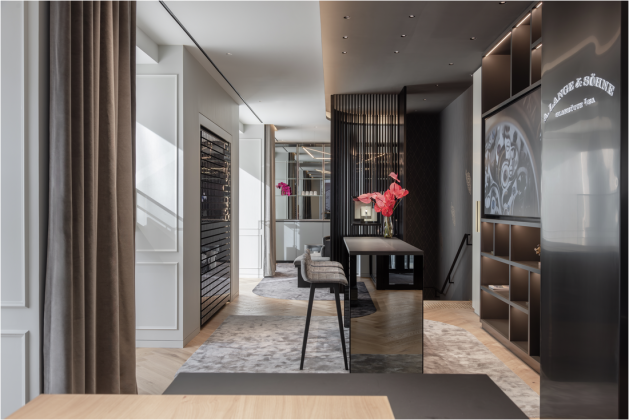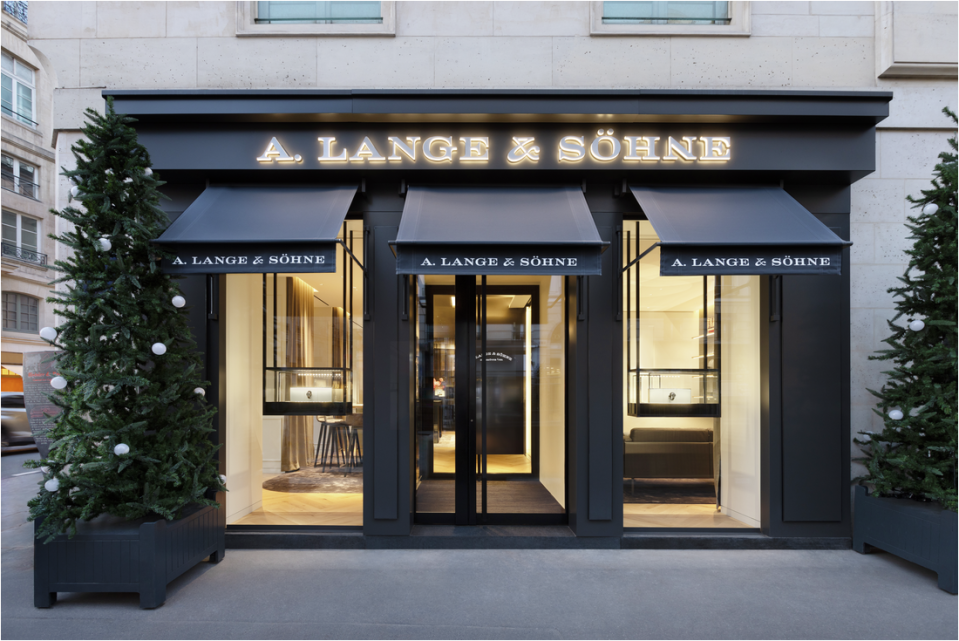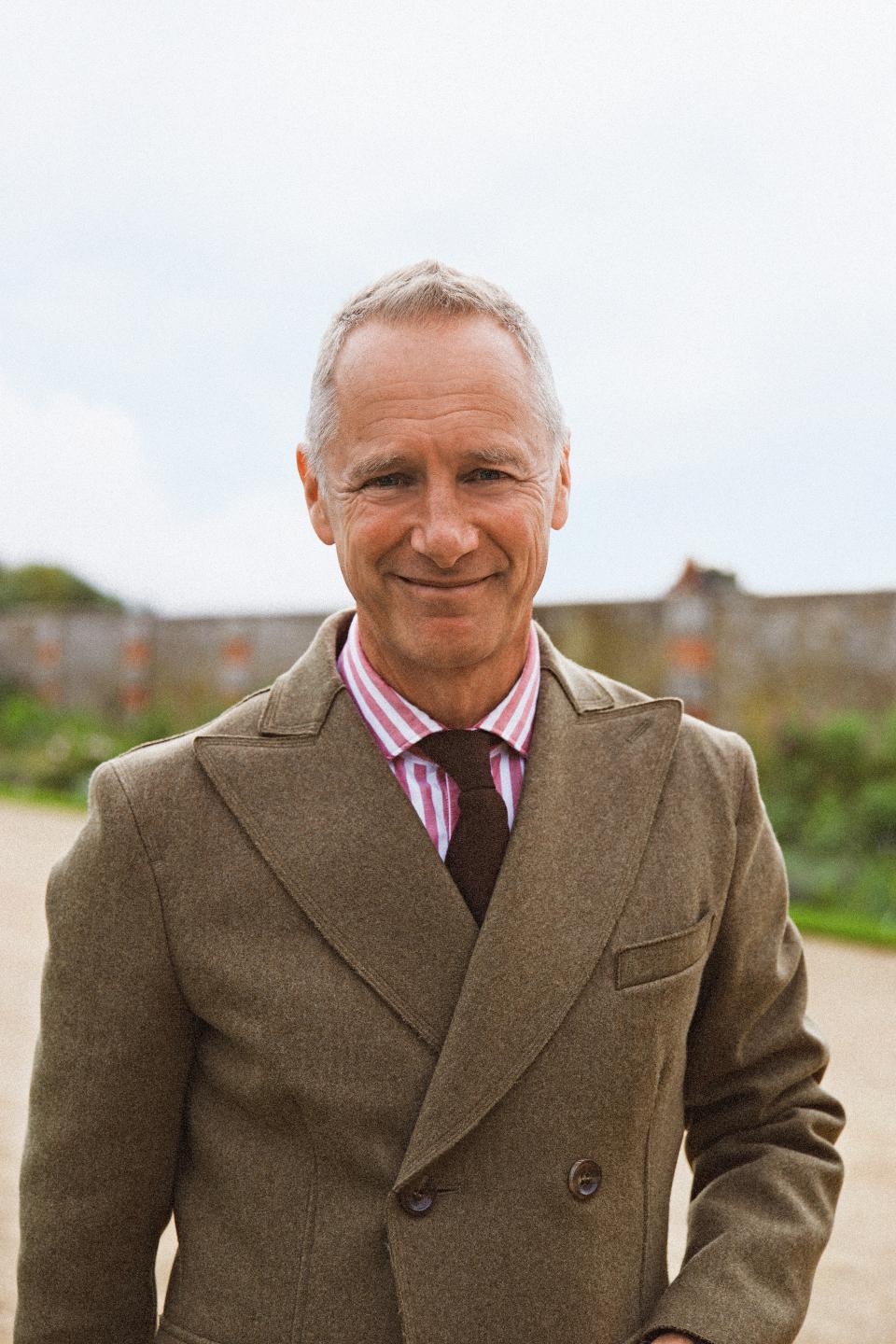A. Lange & Söhne Inaugurates Paris Flagship as Watchmaker Tightens Retail Network

PARIS — When you step through the door of 1 Rue de la Paix, you’re not just stepping into the city’s first A. Lange & Söhne flagship.
The 2,015-square-foot unit is “almost like an embassy to a country,” the German watchmaker’s chief executive officer Wilhelm Schmid told WWD. “Not everyone can come to Glashütte, [Germany].”
More from WWD
Frederique Constant Drops Two Limited-editions to Its Highlife Collection
Timex Group Luxury Division Has Big Plans for Versace, Philipp Plein Timepieces
Hence the experience offered by the two-floor boutique. On the ground floor is the “Wall of Parts” that shows the 500-plus pieces of hand-finished components that are used in its Triple Split chronograph as well as a craftsperson, in charge of servicing that do not require the watch being sent back to the watchmaker’s factory. There’s also a well-appointed bar, with seating space.
Downstairs, a series of lounges can host client gatherings thanks to a full kitchen, while the “Experience Library” gives an overview of the brand’s history. An additional 1,200 square feet of offices and separate staff facilities are also located on this level.
The main mission of such a store is to be “a point of contact, and entrance for communication and interaction with whoever’s interested in fine watchmaking,” Schmid said.
This is especially true in the French capital, which holds a special spot in the company’s origin story.

Founder Ferdinand Adolph Lange came to Paris in 1837 to head the workshop of one of the biggest chronometer specialists of the time — while studying astronomy and physics at La Sorbonne — before returning home to open his own company in 1845. The first tourbillon movement was also presented in Paris at the Universal Exhibition, to great acclaim.
Capacity for hospitality will play a crucial part in the brand’s new Parisian chapter as the executive described the challenge here as building a strong local business and connecting with the local watch community. “Getting close will take time — we have it — but that is for me a critical success factor, Schmid said.
The Paris opening comes less than a month after the German watchmaker opened a New York City flagship at 709 Madison Avenue. But don’t expect openings to continue at a rapid clip, Schmid said.
It is also the first wholly owned boutique for the brand, which is part of the Compagnie Financière Richemont stable. Previous doors, on Rue de la Paix and later on Rue Saint-Honoré, were opened with multibrand retailer Dubail, a partnership that ended with the COVID-19 pandemic.
Part of an updated business model, the venerable brand has been cutting its points of sale in the past four years because “if you go to a boutique, you want to see watches,” the executive continued. “Do you go in to have a coffee or a glass of Champagne? Probably not. [Having] five watches there, three watches here and one elsewhere is not helpful.”
Counting more than 80 retail points around the world, the A. Lange & Söhne network will come down to less than 60 by year’s end. In France alone, eight have closed, including corners in Bucherer and Wempe.
“It’s about concentrating focus. We want to have a great aggregation of service, offers, sales, customers — and there are cities that are perfect [in that regard],” said Schmid, naming Singapore, Dubai, Hong Kong, Paris and London among such locales for their strong local community and additional customers flying in.
He expressed satisfaction at the developing picture that sees Asia articulated around eight points of sale in mainland China, plus Hong Kong and Macau, as well as Bangkok and Singapore serving Southeast Asia.
The Americas are “almost done” with eight locations distributed from South America to Canada and the Middle East is covered by the Dubai Mall flagship, the opening of a door in Riyadh this year and Qatar in the works.

Owing to “the critical mass of watches and the resources to cater for them,” Glashütte will remain the center of expertise for the brand, for production as well as after-sales operations.
There are, however, two watchmakers at the Madison Avenue store, with an option for a third position, as it makes sense to serve the region’s customers locally due to logistics and transit times, he said.
And don’t talk to Schmid about training more craftspeople to increase production. Based on the 25-year-old training program for watchmaking and toolmaking the company put in place, it’s either increasing expertise or output — not both.
As it stands, he described the watchmaker as “not industrialized,” with 36 movements, 65 stock keeping units, around 5,500 watches produced yearly, and a 600-strong atelier headcount.
“Anything bigger than us probably is industrialized, because you can’t produce 15,000 watches the way we produce. Otherwise, you would have factories with 5,000 or 6,000 people and we all know [those] don’t exist — plus you couldn’t find the craftsmen on top of that,” he continued.
If that means being restricted in terms of production, or the capacity to consider avenues such as certified pre-owned — “at least for the time being,” he added after a beat — the executive is fine with it.
“That’s our business model. That’s why our clients love it. Because they know human hands struggled in bringing it to perfection,” Schmid said. “That’s what people buy from us.”
Best of WWD


